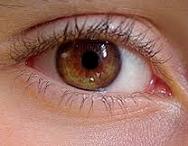 The etymology of the term crystalline takes us to the Latin crystallĭnus , although its root is found in the Greek krystállinos . It is an adjective that is used to describe that which is typical of glass or that is made of this material.
The etymology of the term crystalline takes us to the Latin crystallĭnus , although its root is found in the Greek krystállinos . It is an adjective that is used to describe that which is typical of glass or that is made of this material.
For example: "Crystalline products are the most expensive since you have to invest a lot of money in their manufacture" , "The crystalline reflection moved the woman" , "The police found a ceramic vase and another crystalline one on the table: in both they discovered drug."
Crystalline is also that which is transparent, diaphanous, limpid, translucent or clear , even in a symbolic sense : «Our project is totally crystalline, anyone can see what we do with the money from donations» , «The hotel's panoramic balcony offers a crystalline view » , «My grandmother was an affable woman, with crystal-clear eyes and a frank smile» .
A crystalline person, for example, is one who communicates directly, without entanglements, who does not seem to hide bad intentions or double speech. In this context we also talk about a transparent person , and both expressions point to the same thing, a way of being absolutely sincere .
We should all aim to become crystalline individuals, to free ourselves from lies and bad feelings to be able to connect with our environment in a clean and healthy way for everyone. Nobody likes fake people, who spread poison in their wake, or those who always seem to be hiding something.
In the field of anatomy , the ocular structure that is shaped like a biconvex lens is called the lens. It is located behind the pupil and in front of the vitreous humor in vertebrate animals and cephalopods.
Thanks to its high protein level, the lens has a higher refractive index than that presented by the fluids located around it. In this way, it achieves the refraction of light and enables the cornea to form images on the retina .
The lens manages to focus elements that are located at various distances through changes in its thickness and curvature. These modifications are called accommodation .
 The curvature has a smaller radius on the anterior face than on the posterior face; In the first, it borders the iris and the aqueous humor. These areas of the eye are called the posterior and anterior poles of the lens, respectively; The line that joins its central points is known as the axis , and the distance at which they are separated is known as the thickness .
The curvature has a smaller radius on the anterior face than on the posterior face; In the first, it borders the iris and the aqueous humor. These areas of the eye are called the posterior and anterior poles of the lens, respectively; The line that joins its central points is known as the axis , and the distance at which they are separated is known as the thickness .
Two other important elements of the lens are the equator (the imaginary line that separates its two faces) and the diameter (the length of said line). As the lens undergoes an evolution that lasts the entire life of the human being, which takes place through the production of new layers, its size also grows: from the moment of birth to old age, the thickness ranges from 3, 5 millimeters up to 4.5, while the diameter starts at 6 millimeters and reaches 9.5.
The lens is covered by a transparent, acellular and elastic capsule known as crystalloid , although it is usually simply called a capsule . In some ways, this structure can be compared to that of a pea (which would be the lens) and the skin that covers it (the capsule).
To alter its curvature, the lens needs the ciliary muscle, with which it connects through fibers known as Zinn's zonule . Regarding its internal structure, in the lens we can see a nucleus and a cortex. The anterior surface of the latter is wrapped in a tissue called epithelium , the only one of the lens that can regenerate.
